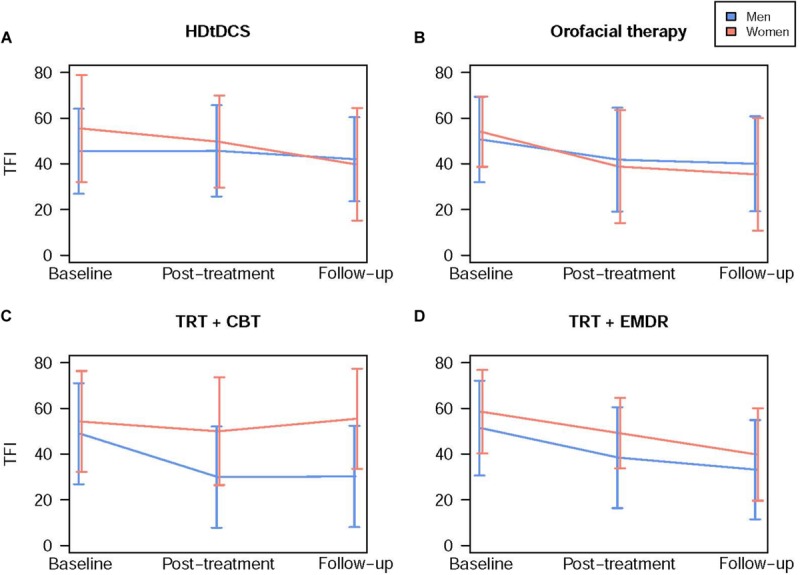FIGURE 2.

Treatment outcome in different therapy groups differs according to gender. Blue lines represent male subjects and red lines represent female subjects. Data are presented as mean TFI scores for each time point ± SD. (A) Female participants benefit more from HDtDCS treatment than men. TFI scores decreased more in female participants (−15.83 ± 24.27) than male (−2.53 ± 13.79) from baseline to follow-up. (B) Female participants benefit more from orofacial therapy than men. TFI scores decreased more in female participants (−19.02 ± 16.85) than male (−10.53 ± 19.65) from baseline to follow-up. (C) Male participants benefit more from TRT combined with CBT than women. TFI scores decreased more in male participants (−22.42 ± 23.02) than female (0.44 ± 21.26) from baseline to follow-up. (D) Male and female participants benefit equally from TRT combined with EMDR. TFI scores decreased similarly in male (−19.1 ± 15.82) and female participants (−16.46 ± 14.3) from baseline to follow-up. TFI: Tinnitus Functional Index; HDtDCS: High-Definition transcranial Direct Current Stimulation; TRT: Tinnitus Retraining Therapy; CBT: Cognitive Behavioral Therapy; EMDR: Eye Movement Desensitization and Reprocessing.
